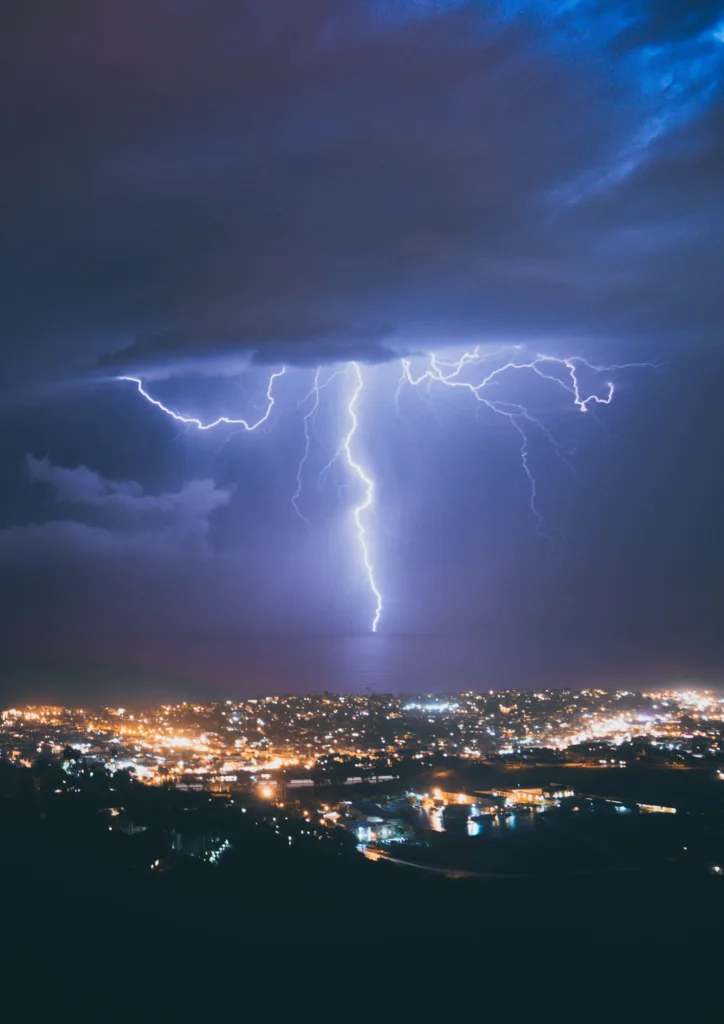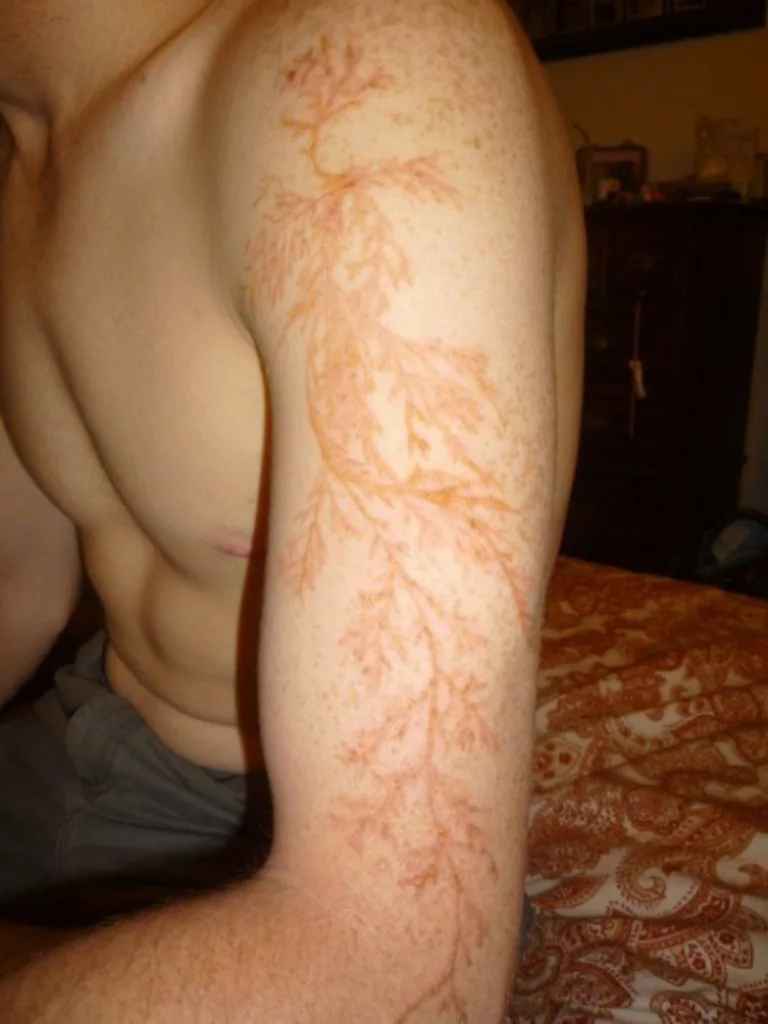Lightning strikes are incredibly powerful and dangerous forces of nature. When a lightning bolt strikes someone, it can cause serious injuries and even death. However, survivors of lightning strikes often have scars that can tell the story of their experience.
After being struck by lightning, some people may have scars that resemble a tree branch or a spider web on their skin. These scars are known as Lichtenberg figures, and they are created by the electrical energy that passes through the body during a lightning strike. The patterns are typically red or brown in color and can last for several days before fading away.
In addition to Lichtenberg figures, lightning strike survivors may also have other types of scars. Burns are common, as the heat from a lightning bolt can cause damage to the skin. These burns may be minor or severe, depending on the intensity of the lightning strike.
Another type of scar that can occur after a lightning strike is a puncture wound. This can happen if a lightning bolt strikes an object near the person, causing debris to fly into their skin. These wounds can be painful and may require medical attention.
While lightning strike scars can be a physical reminder of a traumatic experience, they can also serve as a reminder of the survivor’s strength and resilience. Many survivors choose to embrace their scars as a symbol of their survival and the power of nature.
It’s important to note that lightning strike scars are relatively rare, as most lightning strikes do not result in serious injuries. However, if you or someone you know has been struck by lightning, it’s important to seek medical attention immediately. Lightning strikes can cause serious internal injuries, even if there are no visible scars on the skin.
Lightning strike scars can take many different forms and can serve as a physical reminder of a powerful and dangerous force of nature. While they may be rare, it’s important to take lightning strikes seriosly and seek medical attention if you or someone you know has been struck. As always, it’s important to respect the power of nature and take steps to stay safe during thunderstorms.
Do Lightning Strike Scars Go Away?
Lightning strike scars usually fade away within hours after the lightning strike. However, the duration of the marks may vary from person to person depending on the severity of the strike and their skin sensitivity. In some cases, the red marks may last longer than usual. It is recommended to apply an antibiotic ointment or petroleum jelly on the affected areas several times a day until they completely heal. This will help in reducing the visibility of the scars and also prevent any infection or further damage to the skin. Additionally, it is important to seek medical attention immediately if you experience any signs of serous health complications after a lightning strike.

Are Lightning Strike Marks Permanent?
Lightning strike marks are not always permanent and tend to disappear within days. Although lightning tree scars may appear within hours of the incident, they are exceptionally rare to find today. While a few rare cases have been photographically documented, the fading of the scars makes it challenging to find anyone with lightning strike marks. Therefore, it can be concluded that lightning strike marks are not always permanent and may disappear over time.
Can Lightning Give You Scars?
Lightning can give you scars. When a person is struck by lightning, the electric current can cause blood vessels to burst and create a pattern of scars on the skin known as a Lichtenberg figure. This pattern branches out acros the body like the limbs of a tree, tracing the path that the electricity took as it travelled through the person’s body. The scars can be permanent and are often a result of the heat generated by the electric discharge. In addition to scars, lightning strikes can also cause a variety of other injuries, including burns, nerve damage, and internal organ damage. It is important to seek medical attention immediately if you are struck by lightning, as the effects can be severe and potentially life-threatening.
What Are Scars Left By Lightning Called?
The scars left by lightning strikes are commonly knwn as keraunographic marks. They are characterized by intricate, branching patterns resembling flowers or trees, and are often found on the areas of the body that were directly hit by the lightning bolt, such as the arms, back, neck, chest, or shoulders. These marks are caused by the intense heat and electricity of the lightning bolt, which can create a variety of effects on the skin, including burns, blisters, and other forms of tissue damage. While keraunographic marks are often considered a distinctive and fascinating aspect of lightning strike injuries, they can also be a painful reminder of the traumatic event and its potential long-term effects on the body.

Conclusion
Lightning strike scars can vary in appearance and severity depending on a number of factors, including the strength of the electrical discharge, the path it takes through the body, and the individual’s overall health and susceptibility to injury. While some lightning strike scars may appear as simple red marks that fade within hours, others may leave behind more permanent and dramatic patterns known as Lichtenberg figures or “lightning trees.” Regardless of the type of scar, it’s important to treat the affected skin with care and attention to avoid infection and ensure proper healing. And while lightning strike scars are reatively rare, they serve as a powerful reminder of the awesome power of nature and the importance of staying safe during thunderstorms and other extreme weather events.
